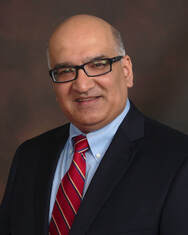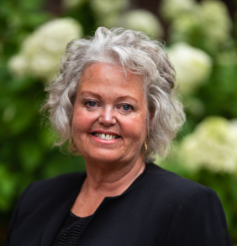Five Questions for Patrice Bain, co-author of "Powerful Teaching: Unleash the Science of Learning"12/13/2019 In this blog post, I pose five questions to Patrice Bain, co-author of an excellent book on teaching titled “Powerful Teaching: Unleash the Science of Learning.” I have taken these five questions plus a bonus question from the video interview I did with Patrice and edited them for clarity. Also, I asked Patrice to recommend five books on teaching and learning that one can read to gain more knowledge. How did you discover the scientific approach to teaching elementary school students on how to learn? Teaching is challenging since there are so many demands put on teachers, and there is not sufficient time to do everything teachers want to accomplish. My first several years were trying to figure it all out like how do I get the lesson plans done, how do I cover the curriculum in classes and how do I finish other tasks. After teaching for several years, I started asking, “Why are some students learning well and others aren't?” and “What is the disconnect here?” It was about this time that I met two wonderful cognitive scientists Mark McDaniel and Henry Roediger, who are cognitive scientists from Washington University in St. Louis. They wanted to research how students learn in authentic classrooms.They were interested in this because up to this point, most research up to this point was done at universities in laboratories with college students. Dr. Roediger and Dr. McDaniel chose my classroom after they obtained a grant from the Institute of Education Science (IES) to research how students learn in elementary schools. I was fortunate to be at the forefront of how learning takes place in elementary schools, and the cognitive scientist who came to work with me in my classroom was Pooja Agarwal, the co-author of my book “Powerful Teaching.” Soon, we started looking at strategies that were effective in students’ learning. I worked for years with these cognitive scientists and was able to learn how students learn because how students learn is typically not taught in teacher education programs. I taught for over 25 years, and it probably took about fifteen years before I was able to start perfecting my craft and creating learning strategies based on cognitive science. Why are students not taught how to learn? As a teacher, I was never taught how to learn through my education programs. I can't remember once where we ever discussed how students learn and what strategies improve their learning. I began to question why educator’s often didn’t have access to the cognitive science research. I made it my mission to not only test research based learning strategies in my classroom, but promote it to other teachers so they could help their students learn how to become effective learners. When I taught my students how to learn, they felt empowered and started feeling good about learning. Learning became fun. Getting students to feel empowered about learning was very important since some of my sixth graders had internalized failure. They were saying to themselves, "I'm just not smart," but in reality, that was far from the truth. Once they learned how to learn, they not only got excellent grades, but could rattle off important information and demonstrate deep thinking on their essays. When I think of so many of the problems that affect students these days, I believe it is often because of this internalized failure that has crept into their mindset. I keep asking, "Why don't we simply teach these type of students how to learn?" It would change many lives by empowering students how to learn, especially when they are young.. What are three stages of learning and why retrieval is so important to learning? There are three main stages of learning: encoding, storage, and retrieval. The first one is encoding. Encoding is where we, as teachers, impart knowledge. This imparting of knowledge can be through lectures, texts, websites, articles, video clips...we choose the methods we see best fitting our student needs. It is getting the information out to others. In schools, this is teacher-driven. The second step is storage. We have been taught to get information into students' heads, not out of their heads. What is important to students is not putting information in, but how do we pull information out of students' heads. This leads us to the third step: retrieval. This is the most important step of learning. Students become adept at doing homework, such as read a question and come up with a correct answer. But they had difficulty retrieving that information on tests. What I found was that students who excelled in doing their homework were not getting good grades on tests when critical thinking was required. That's when I realized that these students were not able to retrieve the information. Once I focused on using different retrieval strategies to address this problem in my classroom, students' grades improved, and they became better critical thinkers. Can the learning strategies that you used in school be used in the workplace? All of the learning strategies can be used anywhere, including at the workplace. Companies need to look at this closely since they spend so much money on training. If employees knew how to learn, they would feel empowered and probably become more engaged in the workplace. Many of the things we write about in our book "Powerful Teaching" such as retrieval, spacing, interleaving, and metacognition, are now used in engineering and medical schools. The reason for this is that students in these cognitive intense programs need to be able to retain a lot of information. For example, a doctor in the ER can't just google something. They must have the information at their fingertips when they are taking care of patients. People in corporations also have cognitive intense jobs where they have to pull things out of their heads quickly, whether in meetings, solving a problem, or providing service to customers. Speed is critical for these corporations to compete, and their employees have to be fast in everything they do, including how quickly they can retrieve relevant information to get the job done. All companies want to be a learning organization today, but what we see is that many of them have become teaching or training organizations.Teaching does not result in learning. I think they should closely look at what we write about in our book "Powerful Teaching" and start applying learning strategies or work with us in helping their employees learn faster, better, smarter so the company can indeed become a learning organization. Is the 2/20 technique a good learning strategy? I used this strategy with my son, where I spent two minutes with him in the morning to get him ready for school and focus on what he's going to learn that day in school. Then spend 20 minutes after he came back from school and had something to eat and was ready to go over his day in school. I just let him talk and not say anything till he was done. All I would say to him after he was done was whether he needed any help. Most of the time, he was able to focus and get his work done and be prepared for tests. So I wanted to ask Patrice what she thought of this strategy I used with my son. Patrice Bain's Answer That is a wonderful idea. You are setting your child up in the morning to start thinking ahead. Then after he got home and the 20 minutes you are offering gave him chances for retrieval where your son was going through the day and pulling out information he learned during the school day. Talking about his day is so valuable. As parents, simply asking our children to retrieve what was learned earlier is a powerful learning tool. Bonus Question: What makes someone an outstanding teacher? From my years of experience, I would say you need compassion, a solid understanding of learning strategies, your curriculum, and a passion for learning. In addition, it helps to have good mentors who can guide a novice teacher along with a supportive administration. Many things come together to make one an outstanding teacher. Five Book Recommendations
You can get more information at the following websites: patricebain.com powerfulteaching.org You can contact Patrice at [email protected] or follow her on Twitter at @PatriceBain1.  Jay Oza is a writer, speaker, executive coach. He makes people thrive on high stakes stage whether it's for a job interview, a sales presentation or an important speech. He is the author of the book Winning Speech Moments: How to Achieve Your Objective with Anyone, Anytime, Anywhere. Please download the speech checklist that will help you with your next high stakes speech. Please contact him if you would like to have an two 75 minute coaching session or interested in inviting him to your event to give a talk on job Interviewing or High-Stakes Speaking. You can reach him at [email protected] or 732-847-9877.
0 Comments
Leave a Reply. |
AuthorJay Oza Archives
July 2024
Categories
All
|
© 2017 Winning Speech Moments


 RSS Feed
RSS Feed